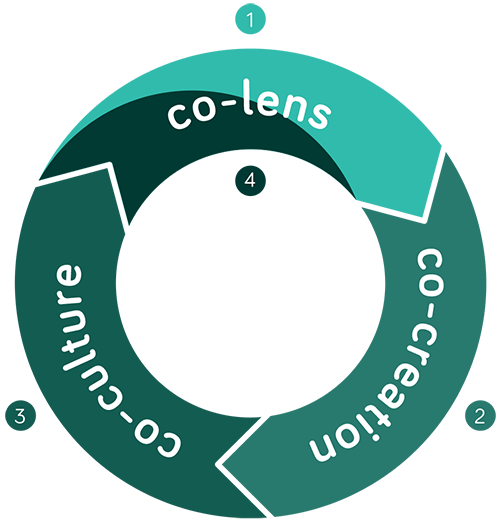ecloo has developed a model that distinguishes 5 types of collaboration cultures:
Dominance: Decisions are taken unilaterally from the top while people are expected to follow orders. People are competing over status, recognition and resources in pyramidal structures.
Territoriality: Little information and knowledge is shared, each organizational unit works on their own, little interaction with others happens.
Cooperation: People start taking an interest in what others do and align their goals accordingly.
Collaboration: People work around an inspiring, shared vision. They are ready to give up individual interests for the greater organizational good. Hierarchies become less important and structures more circular.
Eclosion: Organizations go beyond internal collaboration. They work closely with customers, other organizations and even competitors in order to create social impact. The French word eclore has given this final stage its name: It means opening up like a flower or hatching.
Through its experiential approach, ecloo’s methodology inspires people to take action, reflect on those experiences and learn to create more collaborative organizations. This happens in 4 steps:
- co-lens
Through the co-lens, participants measure the degree and culture of collaboration. They become more aware of the way they work together.
- co-creation
From awareness to action: Participants from different organizational units and hierarchical levels co-create a meaningful project with a positive impact. ecloo helps them reflect those collaborative experiences.
- co-culture
ecloo supports participants and organizational leadership in transforming the co-creation experience into a new organizational culture. The organizational value of collaboration now translates into authentic behavior.
- co-lens
Through the co-lens the degree of collaboration and its impact are measured again and made visible.

To get a taste of ecloo’s collaboration tools, take this survey:

